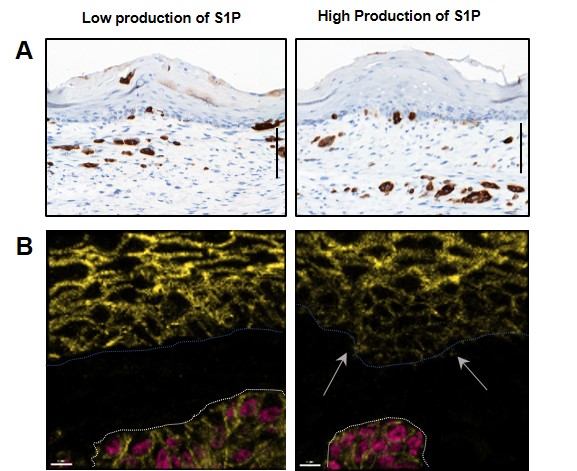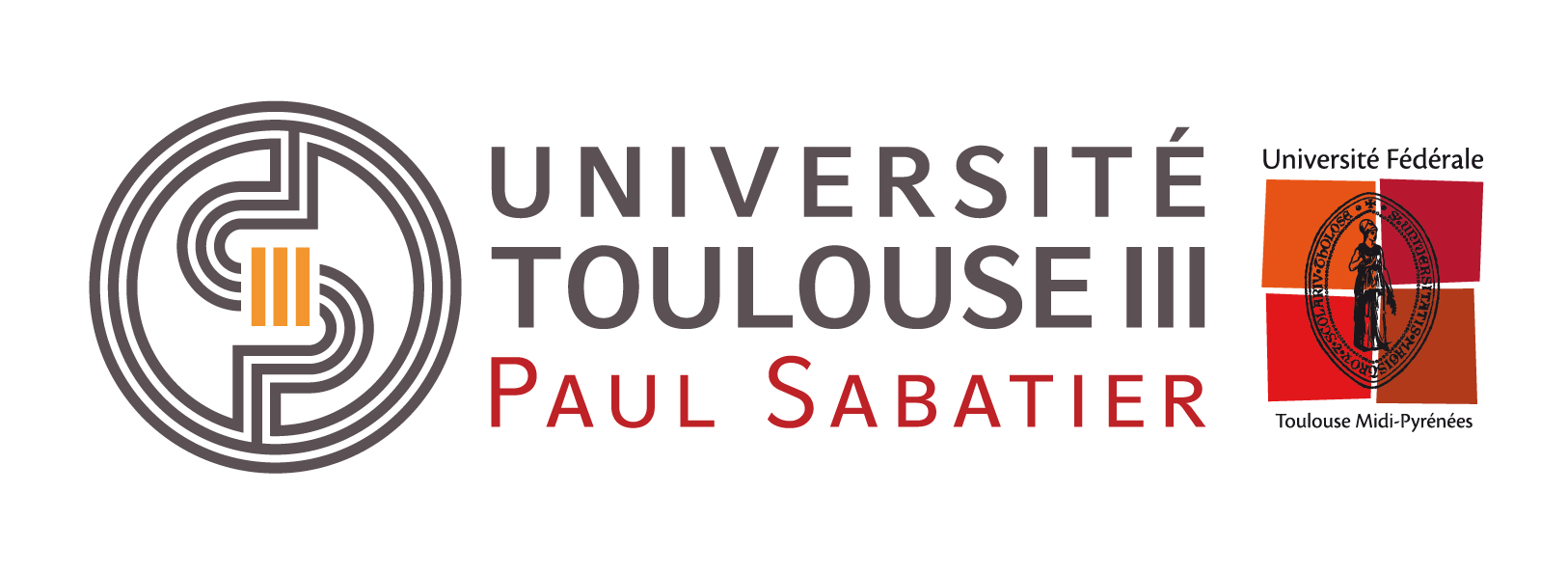Study of the contribution of tumour lipids to the metastatic progression of cutaneous melanoma
E-cadherin,
epidermis,
melanoma,
metabolism,
microenvironment,
sphingosine 1-phosphate
Joelle Riond and Nathalie Andrieu – équipe MELASPHINX – Ceramide metabolism in melanoma: from basic mechanisms to immunotherapy.
In healthy skin, keratinocytes have strong adhesion structures that enable them both to maintain a cohesive, watertight epidermis and to control the growth of melanocytes, the cells that pigment the skin. During the development of cutaneous melanoma, adhesion to keratinocytes can break down, leading to the invasion of tumour cells into the underlying dermis. In a 3D reconstructed skin model, the team identified that sphingosine 1-phopshate (S1P), a lipid oncometabolite secreted by primary melanoma cells, decreases the expression of E-cadherin on the surface of keratinocytes in the epidermis. This leads to loss of adhesion of tumour cells to keratinocytes and dermal invasion, two events that can be blocked by molecules binding to S1P receptors. In addition, multiparametric analysis of tumours from patients with primary melanoma shows that these two events could be predictive of a risk of dissemination.
Ultimately, the potential applications of this study could be the development of companion tests to predict the risk of metastasis of primary melanoma, as well as novel pharmacological approaches as adjuvant therapies after surgery for the early treatment of cutaneous melanoma.

3D reconstructed skin model containing melanomas producing variable amounts of sphingosine 1-phosphate (S1P). (A) Immunohistochemistry showing that high production of S1P by melanoma cells (brown) is associated with greater dermal invasion (B) Immunofluorescence showing that high production of S1P by melanoma cells (red) is associated to a decrease in E-cadherin expression (yellow) in the adjacent epidermis.
Discover the published article
Cell Rep. 2023 Dec 18;42(12):113586. doi: 10.1016/j.celrep.2023.113586. Online ahead of print.
Sphingolipid paracrine signaling impairs keratinocyte adhesion to promote melanoma invasion.
Noujarède J, Carrié L, Garcia V, Grimont M, Eberhardt A, Mucher E, Genais M, Schreuder A, Carpentier S, Ségui B, Nieto L, Levade T, Puig S, Torres T, Malvehy J, Harou O, Lopez J, Dalle S, Caramel J, Gibot L, Riond J, Andrieu-Abadie N.
Collaborations and partnerships
- Dr J Caramel Centre de Recherches en Cancérologie de Lyon, France.
- Prof S Dalle Service de Dermatologie, Hospices Civils de Lyon, France.
- Prof S Puig Melanoma Unit, University of Barcelona, Spain
- Dr L Gibot IMRCP, CNRS UMR5623, Toulouse, France.
- Dr P Descargues Genoskin, Toulouse
- Profs. P. Galinier/O. Abbo/Dr. F. Auriol, Children Hospital Pediatric Unit, CHU Toulouse, France
- Drs. J. Casas/G.Fabriàs Institute of Advanced Chemistry of Catalonia, Barcelona, Spain
Funding : INSERM, INCa, Fondation ARC, Société Française de Dermatologie, ERA-NET Transcan-2, FRM, EUR CARe

Centre de Recherches contre le Cancer de Toulouse (Oncopole)
Toulouse - FR
Nous contacter
+33 5 82 74 15 75
Nous rejoindre ?




